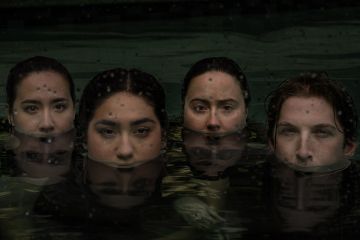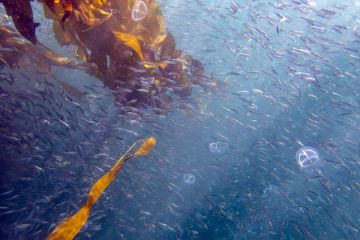UVIC ARCHAEOLOGIST PART OF MAJOR UNDERWATER DISCOVERY
A UVic researcher is among a National Geographic Society team of oceanographers, engineers and archeologists that used a nuclear submarine to discover the largest concentration of ancient shipwrecks ever found in the deep sea. Dr. John Peter Oleson (Greek and Roman Studies) viewed the site off southern Italy and examined artifacts retrieved from 2,500 feet beneath an ancient Mediterranean Sea trade route by the remotely operated submersible Jason. The expedition was led by Robert Ballard, whose previous underwater exploits have included the discovery of the wrecks of the RMS Titanic and the German battleship Bismarck.
In announcing the discovery today in Washington, D.C., Ballard said the discovery of the 2,000 year old wrecks launches a new era in archaeology. "Most shallow-water shipwrecks tear up on rocks, become encrusted with coral, or are looted by divers and fishermen. These deepwater sites are covered only by a very fine dusting of sedimentation and have never been touched by humans--until now."
The oldest of the wrecks is one of the few and one of the earliest shipwrecks from ancient Roman times ever found, dating from the late 2nd or early first century B.C. It lies undisturbed, with most of the finds intact. Three other wrecks probably date to the first century A.D. Their cargo includes high quality marble or granite building stones and a large supply of kitchen ware.
"Sampling the splendidly preserved cargo of cooking wares in this wreck is like shopping in a Roman kitchenware outlet," said Oleson. The researchers believe the ships were sunk by sudden violent storms that frequent the Mediterranean during certain times of the year.
Although Oleson has participated in previous underwater archaeological explorations in Italy and Israel, the Mediterranean project was the first to provide him with the opportunity to investigate the mechanisms of archaeological site formation in deep water. The researchers used the U.S. Navy's nuclear submarine NR-1 to locate the site. Oleson had special responsibility for planning archaeological work by the NR-1 and cataloging the artifacts recovered by the NR-1 and Jason. The project's site enabled him to investigate if any characteristics of the shipwrecks or their artifacts might be specific to the deep water environment.
The project was funded by the U.S. Navy's Office of Naval Research and the Navy's Office of Deep Submergence Systems, National Geographic Television, the National Geographic Society's Committee for Research and Exploration, the Institute for Exploration, the J.P. Kaplan Fund, Sun-Star Electric Inc., Boston University, UVic, the Joukowsky Foundation and private donors.
National Geographic Television is producing a film about the expedition that will air on its "Explorer" series on TBS in early 1998. National Geographic magazine is preparing an article.
-- 30 --
In this story
Keywords: uvic, archaeologist, major, underwater, discovery




